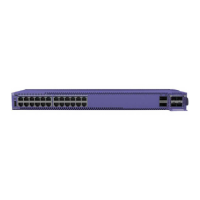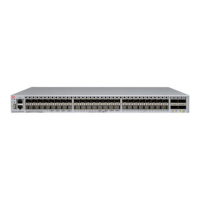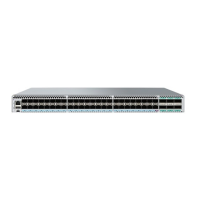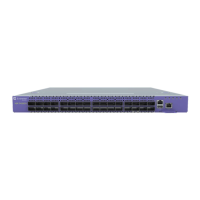Considerations Before Installing
Consider the following items before you install equipment.
• For equipment designed to operate in a typical Telco environment that is
environmentally controlled, choose a site that has the following characteristics:
◦ Temperature-controlled and humidity-controlled, such that the maximum
ambient room temperature shall not exceed what the equipment manufacturer
recommends.
◦ Clean and free from airborne materials that can conduct electricity.
◦ Well ventilated and away from sources of heat including direct sunlight.
◦ Away from sources of vibration or physical shock.
◦ Isolated from strong electromagnetic elds produced by electrical devices.
• For equipment designed to be installed in environments that are not
environmentally controlled, such as outdoor enclosures, see the product data sheet
or for environmental conditions, temperature, and humidity.
• Establish at least 3 inches clearance on all sides for effective ventilation. Do not
obstruct the air intake vent on the front, side, or rear ventilation grills. Locate the
system away from heat sources.
• Make sure that your equipment is placed in an area that accommodates the power
consumption and component heat dissipation specications.
• Make sure that your power supplies meet the site DC power or AC power
requirements of all the network equipment.
• Racks for Extreme Networks equipment must be permanently attached to the oor.
Failure to stabilize the rack can cause the rack to tip over when the equipment is
removed for servicing.
• Do not operate the system unless all modules, faceplates, front covers, and rear
covers are in place. Blank faceplates and cover panels are required for the following
functions:
◦ Preventing exposure to hazardous voltages and currents inside the equipment
◦ Containing electromagnetic interference (EMI) that might disrupt other
equipment
◦ Directing the ow of cooling air through the equipment
• Ultimate disposal of this product should be handled according to all national laws
and regulations.
General Safety Precautions
Follow these guidelines:
• Do not try to lift objects that you think are too heavy for you.
• When you install equipment in a rack, load heavier devices in the lower half of the
rack rst to avoid making the rack top-heavy.
• Use only tools and equipment that are in perfect condition. Do not use equipment
with visible damage.
• Route cables in a manner that prevents possible damage to the cables and avoids
causing accidents, such as tripping.
Considerations Before Installing Safety and Regulatory Information
114 ExtremeSwitching 5420 Series Hardware Installation Guide

